Fast Facts
Date of Birth: July 19, 1827
Place of Birth: Nagwa, Ballia district, Ceded and Conquered Provinces, British India
Death: April 8, 1857
Place of Death: Barrackpore, Calcutta, Bengal Province, British India
Occupation: Soldier in 34th Bengal Native Infantry (B.N.I.) regiment of the British East India Company
Famous For: Revolt of 1857
Mangal Pandey was an Indian soldier who played an important role in incidents prior to the uprising of 1857, known by different names like the ‘Indian Rebellion of 1857,’ the ‘Sepoy Mutiny’ and ‘India’s First War of Independence.’ His name has become synonymous with the revolt of 1857. A staunch Brahmin by faith, Pandey served the British East India Company as a sepoy (soldier) in its 34th Bengal Native Infantry (BNI) regiment. He refused to bite off ends of greased cartridges of a newly introduced Enfield rifle after the rumours of use of cow and pig fat as a lubricant in the cartridges. The infuriated man thereafter incited his comrades to rebel against the British officers, and attacked them, when he was restrained from shooting himself, but was overpowered, arrested, and court-martialled. He is regarded as a hero in India. The government of India issued a postage stamp in his honour in 1984. His life has been portrayed in several film and television productions.
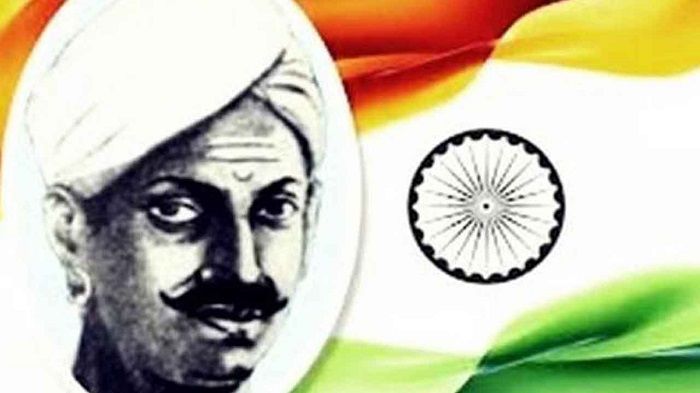
Image Credit : https://www.youtube.com/watch?v=XiTaGf7Txls
Early Life
Mangal Pandey was born on July 19, 1827, in Nagwa village of upper Ballia district, in Ceded and Conquered Provinces (presently in Uttar Pradesh) in British India. He hailed from a high-caste Brahman landowning family with strong Hindu beliefs. In 1849, he joined the Bengal Army. It was the army of one of the 3 presidencies of British India, the Bengal Presidency. According to some sources, Pandey was inducted by a brigade that marched past him. He became a private soldier in the 5th Company of the 34th Bengal Native Infantry (B.N.I.) regiment of the British East India Company in March 1857. The regiment included several Brahmins.
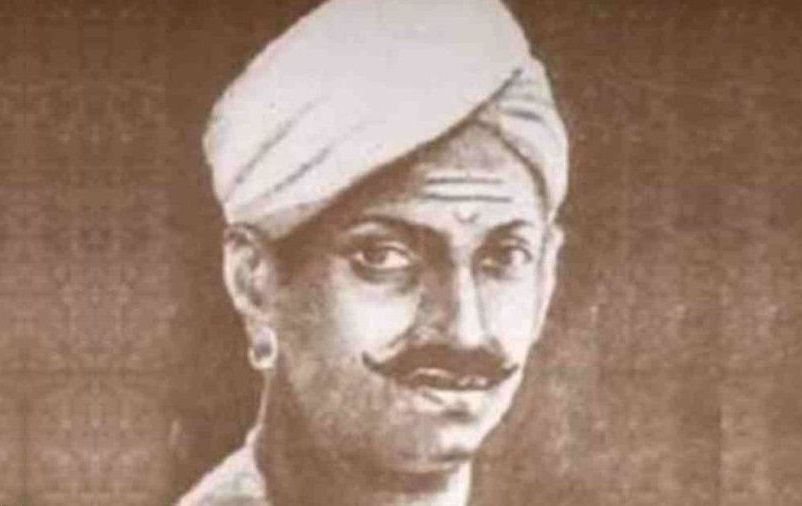
Image Credit : https://www.amarujala.com/photo-gallery/uttar-pradesh/varanasi/freedom-fighter-mangal-pandey-birthday-today
Mangal Pandey and The Revolt of 1857
The British introduced a new Enfield rifle in India in the mid-1850s, and its greasy cartridges were loaded to the weapon only after biting off their ends. Rumours started doing the rounds that the lubricant used in the cartridges was either cow or pig lard. While cows are deeply respected by the Hindus, pork is forbidden for Muslims, thus a sense of indignation started brewing up among the Indian sepoys. Pandey was posted at the garrison in Barrackpore during that time. A staunch Hindu Brahmin by faith, Pandey too became furious after knowing about the matter and resolved to show his disapproval to the British.
It is generally believed that Pandey attempted to incite the other soldiers of his regiment to revolt against the British officers and planned a rebellion against the British rule. Lieutenant Baugh, Adjutant of the 34th Bengal Native Infantry, posted at Barrackpore came to know on March 29, 1857, that some of the sepoys of his regiment are in an agitated state and that one Mangal Pandey armed with a loaded musket was inciting his fellow soldiers to rebel. Pandey threatened to shoot the first European he would see. According to a testimony given at a subsequent enquiry, the furious Pandey seized weapons and rushed to the quarter-guard building after knowing that a British soldiers’ detachment has arrived on a steamer and were disembarking close to the cantonment.

Image Credit : https://www.youtube.com/watch?v=J6YVh60JNJk
Sergeant-Major Hewson arrived on the parade ground and ordered the Indian officer in command of the quarter-guard, Jemadar Ishwari Prasad, to arrest Pandey. Prasad, however, said that he cannot catch Pandey alone as his NCOs had gone for help. Meanwhile learning about the revolt, Lieutenant Baugh armed himself and headed towards the lines on his horse. Seeing him coming, Pandey took position behind the station gun in front of the quarter-guard of the 34th and fired at Baugh. The bullet struck Baugh’s horse and brought him down to the ground. Baugh then fired at Pandey but missed him and while he was about to draw his sword, the gallant Pandey wounded him with a heavy Indian sword. Another sepoy Shaikh Paltu tried to restrain Pandey from causing more harm to the adjutant. Hewson then confronted Pandey but was hit by the latter’s musket and fell on the ground. Other sepoys of the barracks rushed in hearing the gun fire but refused to go against Pandey to help Paltu in defending the two Englishmen. Some of the sepoys threw stones and shoes at Paltu and threatened to shoot him if he does not release Pandey. Paltu somehow clung on to Pandey till the time the two Englishmen could rise and escape.
A report of the incident reached the commanding officer General Hearsey who then rode to the scene with his two officer sons and took the situation under control. The general took out his gun ordered the sepoys to do their duty and warned to shoot anyone who defies his orders. The sepoys now obeyed his orders and as Pandey sensed that he would be arrested, the brave fighter tried to take his own life by putting the muzzle of the musket to his chest and shooting himself pulling the trigger with his toe, which, however, did not proved fatal.
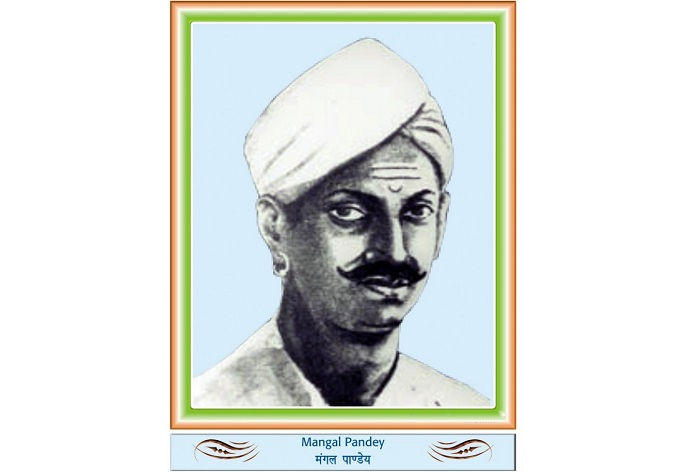
Image Credit : https://jobloo.in/mangal-pandey-images-first-freedom-fighter-mangal-pandey-wiki/
Consequences of the Revolt
Following his recovery, Pandey was court martialled on April 6, 1857. He was asked if he had been under the influence of any substance. To this he replied that he revolted on his own and no one had any hand in influencing him. He was given death sentence. Jemadar Ishwari Prasad was also tried and given death sentence after testimony of three Sikh members of the quarter-guard revealed that Prasad had given orders not to arrest Pandey. Although the execution of Pandey was set for April 18, 1857, the British authorities fearing an outburst of a bigger revolt hanged him to death on April 8, 1857. Prasad was also hanged to death on April 21.
An enquiry by the British government was conducted on the 34th B.N.I. Regiment. It was concluded that the regiment failed in performing their duty in restraining a rebellious sepoy. While petitions for leniency started pouring in, a collective punishment was imposed on the regiment by disbanding it “with disgrace” on May 6, 1857. Meanwhile, a day after Pandey’s execution, Shaikh Paltu was promoted to Havaldar (native sergeant) and was recommended for a decoration by General Hearsey. A few days prior to the disbandment of the 34th B.N.I. Regiment, Paltu was lured to an isolated area of the Barrackpore cantonment and murdered by many of his former colleagues.
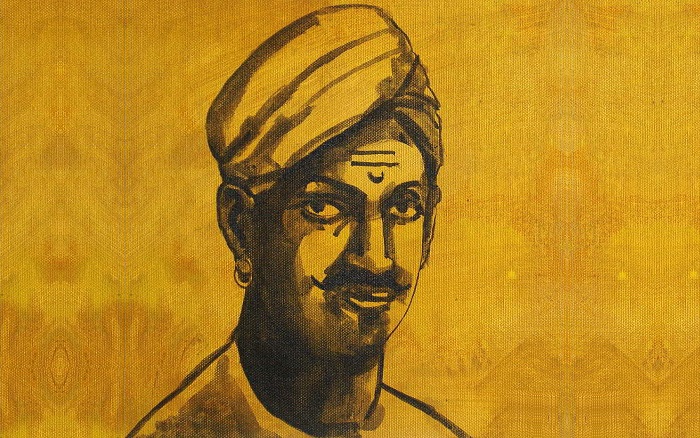
Image Credit : http://www.marvelartgallery.com/painting.php?pid=552&aid=36
Legacy
On October 5, 1984, a postage stamp with his image on it was issued by the Government of India in his honour. A park was constructed at Barrackpore to commemorate the place where the courageous man rebelled against the British officers and attacked them. It was named as the Shaheed Mangal Pandey Maha Udyan. A cenotaph of the gallant soldier was also built at the Barrackpore Cantonment on Surendranath Banerjee road in West Bengal.
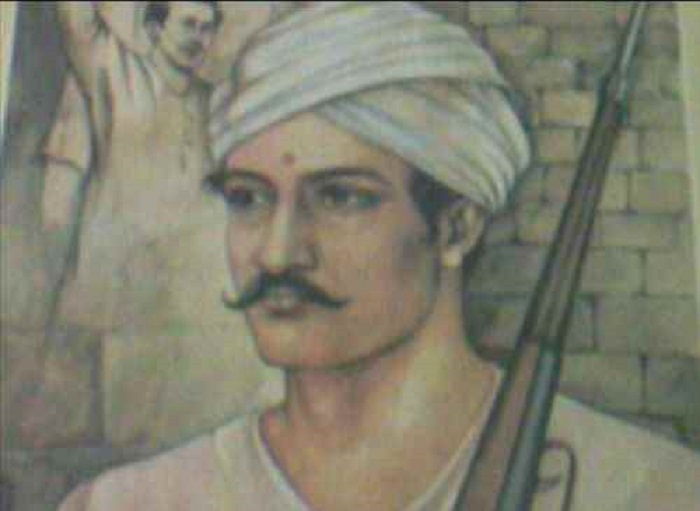
Image Credit : https://jobloo.in/mangal-pandey-images-first-freedom-fighter-mangal-pandey-wiki/
Mangal Pandey in Popular Culture
Several films and television productions have been made on the life of Mangal Pandey. A biographical drama film ‘Mangal Pandey: The Rising’ based on the life of Pandey was released on August 12, 2005. Directed by Ketan Mehta, the critically and commercially acclaimed film features prominent actor Aamir Khan in the role of Mangal Pandey.
Pandey’s life was also portrayed in a play titled ‘The Roti Rebellion.’ It was written and directed by Supriya Karunakaran and produced at ‘The Moving Theatre’ at Andhra Saraswat Parishad, Hyderabad, Andhra Pradesh, in June 2005.


